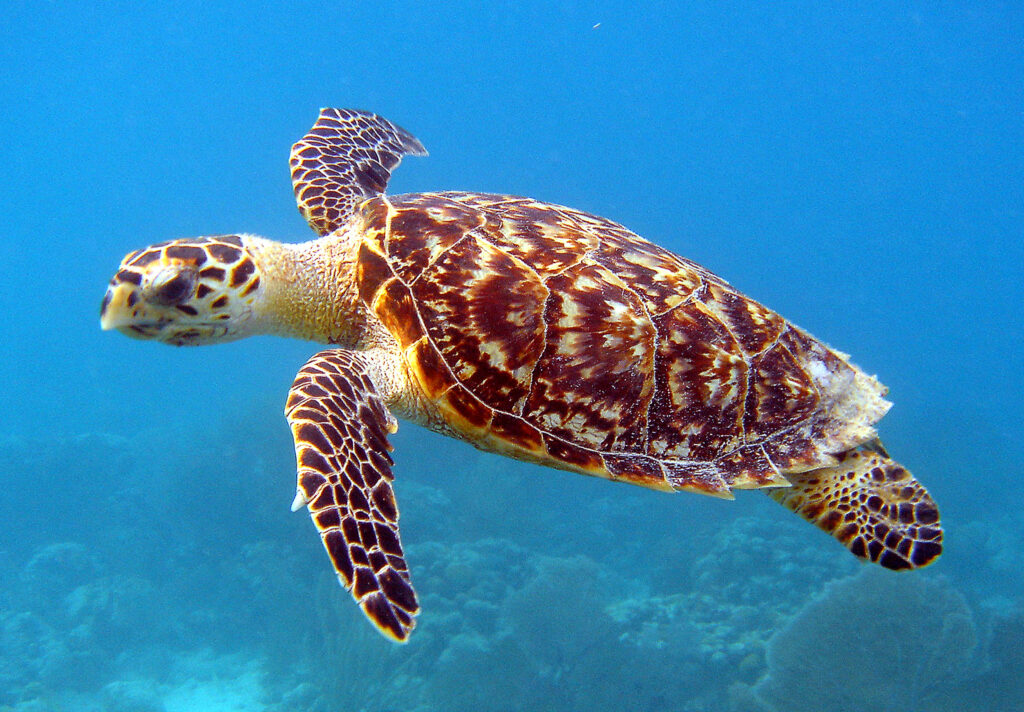Every year on 23 May, people around the globe come together to celebrate World Turtle Day, a special occasion dedicated to giving some love and raising awareness for one of the planet’s most ancient and fascinating creatures. This day serves as a reminder of the vital role that turtles and tortoises (but mostly turtles because we are bias!) play in maintaining healthy ecosystems and the urgent need to protect these remarkable reptiles from the numerous threats they face. World Turtle Day is an opportunity to reflect on their incredible journeys, diverse species, and the conservation efforts crucial for their survival.

Check out these facts that you may have not known about our shelled, aquatic friends:
- Ancient Mariners: Sea turtles have been around for over 100 million years, even pre-dating many dinosaurs!
- Species Diversity: There are seven species of sea turtles: Green, Loggerhead, Kemp’s Ridley, Olive Ridley, Hawksbill, Flatback, and Leatherback.
- Size Range: Sea turtles can vary greatly in size. The smallest, the Kemp’s Ridley, typically weighs between 80-100 pounds, while the largest, the Leatherback, can weigh up to 2,000 pounds.
- Long Migrations: Some sea turtles migrate over 1,000 miles to lay their eggs on the same beaches where they were born.
- Temperature-Dependent Sex Determination: The sex of sea turtle hatchlings is determined by the temperature of the sand where the eggs are incubated. Warmer sand produces females, while cooler sand produces males.
- Long Lifespan: Sea turtles can live for several decades, with some species, like the Green sea turtle, living up to 70 years or more.
- Unique Diets: Different species have different diets. For example, Green sea turtles are mostly herbivorous as adults, feeding on seagrasses and algae, while Loggerheads primarily eat hard-shelled organisms like crabs and clams.
- Flipper Navigation: Sea turtles have strong front flippers that enable them to swim great distances. They use these flippers for steering and propulsion.
- Superb Divers: Leatherback sea turtles are capable of diving to depths of over 1,000 meters (3,280 feet) in search of jellyfish, their primary food source.
- Critical Ecosystem Role: Sea turtles play a crucial role in marine ecosystems by maintaining healthy seagrass beds and coral reefs, controlling sponge distribution, and providing habitat for other marine life.
- Threatened Species: All seven species of sea turtles are considered threatened or endangered due to factors such as habitat loss, pollution, climate change, and illegal poaching.
- Amazing Homing Ability: Sea turtles have an extraordinary ability to navigate back to the beaches where they were born to lay their eggs, often traveling thousands of miles and using the Earth’s magnetic field as a guide.

In celebrating World Turtle Day, we acknowledge not just the incredible resilience and ancient lineage of these magnificent creatures, but also the urgent need for their conservation. By raising awareness and taking action, from supporting habitat protection efforts to reducing plastic waste, each of us can contribute to ensuring that turtles continue to thrive in our oceans and on our lands. As we reflect on the beauty and significance of turtles, let’s commit to making a difference, fostering a world where these gentle beings are safeguarded for generations to come. Together, our efforts today can secure a brighter, more sustainable future for turtles and the ecosystems they call home.


